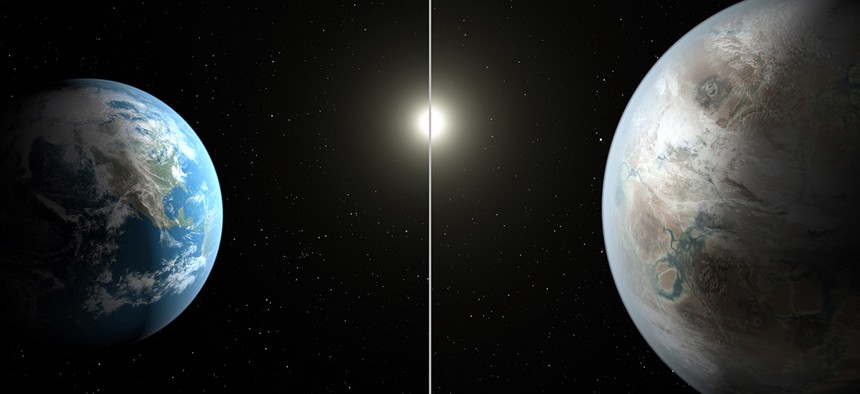Video: The Search for Another Earth

This artist's rendering made available by NASA on Thursday, July 23, 2015 shows a comparison between the Earth, left, and the planet Kepler-452b. NASA/AP
A NASA documentary shows the journey from the very first planets spotted outside our solar system to the more than one thousand exoplanets discovered by Kepler.
The search for planets outside our solar system has long been a shaky scientific subject. It wasn't until 1995 that scientists discovered 51 Pegasi b, a Jupiter-like planet orbiting around a star similar to our sun. The discovery was revolutionary, but find an Earth-like planet was still out of reach.
A few years prior to that discovery, NASA scientist William J. Borucki had proposed a different method of planet detection, known as the transit method. Scientists would measure the regular dips in a star's light to detect the presence of an orbiting planet.
"To be successful all one needed to do was build a photometer 1,000 times better than anyone had ever built one," Borucki said. "But I had worked on the Apollo program, I had worked on other programs. It's not really that scary. You just need to get down too brass tacks, find out what's required and build it."
Borucki spent 25 years making this method of planet detection a reality. In 2009, the Kepler Space Observatory launched and brought with it a wealth of data about planets very similar to our own.
To learn more, check out the documentary below from NASA:
NEXT STORY: Like Uber, But for USDA



